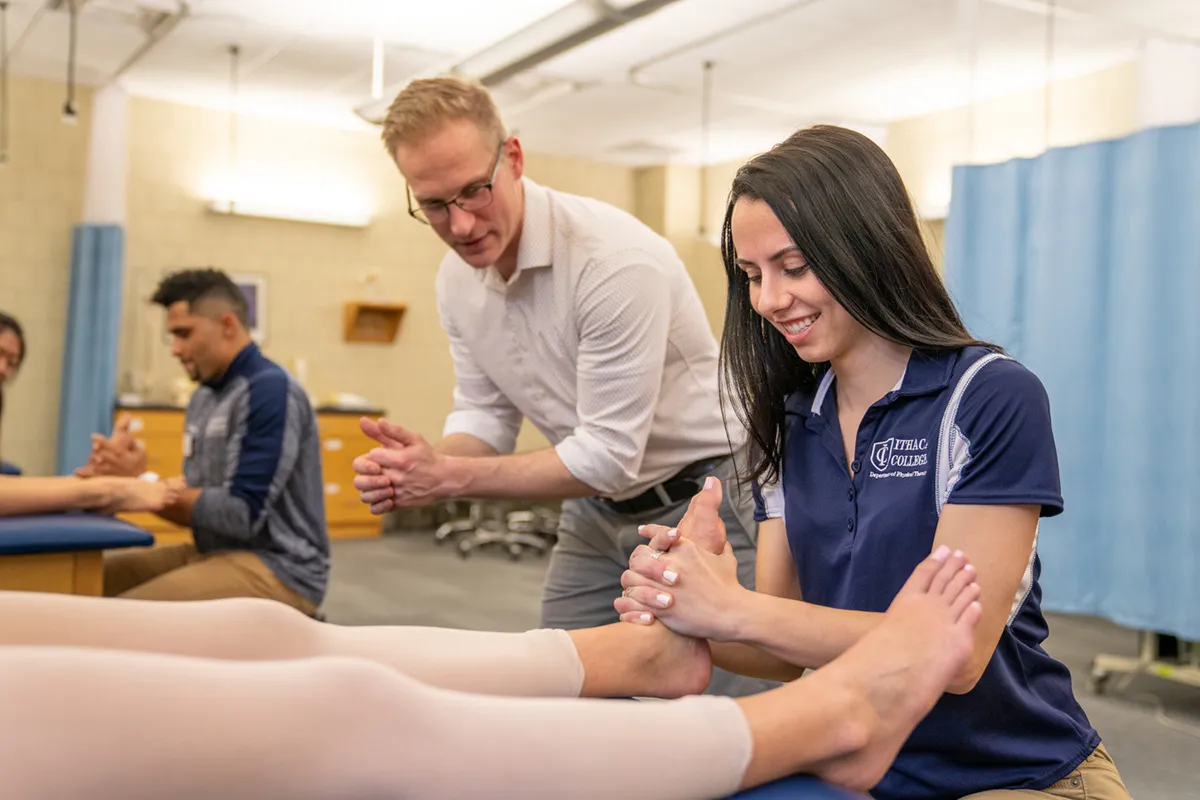For students in a performance-based degree program like musical theatre or music performance, one unexpected obstacle they could run into is an injury from repetitive motion or overuse. When making the transition from high school to college, or preparing for an upcoming performance, the increase in practice hours can lead to muscle strains or aches. Fortunately for students like acting major Anna Riley ‘25 the Ithaca College Department of Physical Therapy offers a free walk-in clinic designated specifically to treat student performers.
Originally founded by retired associate clinic professor of physical therapy Nicholas Quarrier, the Performing Arts Walk-In Clinic in the School of Health Sciences and Human Performance aims to treat this underserved population of performers, including musicians, actors, and dancers. This service is critical because it’s estimated that, throughout their lifetime, 70%-80% of musicians will experience a performance-limiting injury — but not all of them have awareness or access to the treatment options available.
Michael Costello, associate professor of physical therapy, currently spearheads the clinic. Each week during the semester, he dedicates two hours to allow students from the School of Music and Department of Theatre Arts to seek evaluation and treatment for performance-related aches and injuries.
